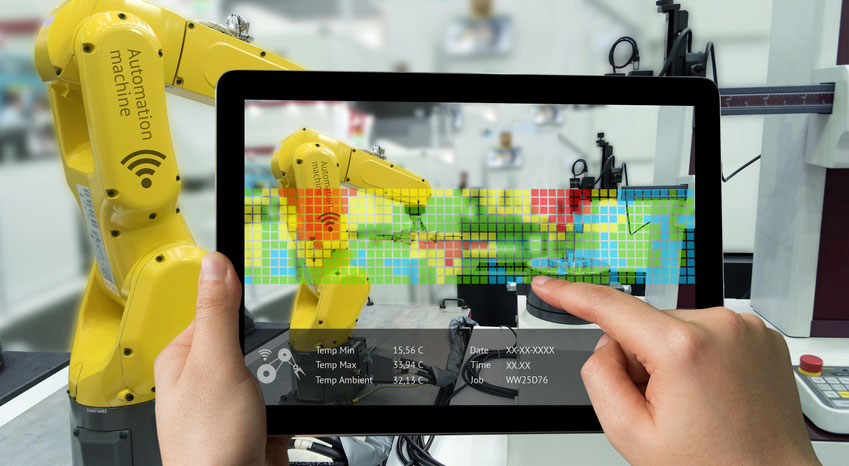When will things actually be smart? When 1+1 equals more than 2, which is the case with the IoT and the IIoT. The internet of things (IoT) is a global network that connects virtual and physical objects and exchanges data and information. IIoT is the industrial internet of things which, through digitalisation, ultimately led to the fourth industrial revolution: Industry 4.0. The data collected can be used to create new information and data, to make decisions based thereon and to support processes. Find out what this could entail specifically and how you can incorporate this appropriately in this post.
There are virtually no limits to the creativity of using the IoT. It is used in countless areas, even including industry. In this context, it is usually referred to as the IIoT (the industrial internet of things). Secure and powerful algorithms, greater stability, reliability and lower costs for sensors and data transmission are opening up new possibilities for the industry. Thus, in industry/manufacturing, the IIoT is today often (but not only) associated with productivity and efficiency improvement, including “predictive maintenance” and zero downtime (ZDT) targets.
Exploring new horizons
IIoT devices have numerous applications designed to make life easier. For example, problems can be detected via data analysis (condition monitoring) and remote diagnostics (predictive maintenance), resolved immediately where applicable and corrective actions can also be implemented.
Many IoT and IIoT solutions are cloud-based. This makes the networked operation even easier. It is thus possible for industry/manufacturing companies to record data from connected sensors and devices which, in turn, can be combined with data and information from business systems and employees. This complete transparency enables real-time adjustments and optimisation. Decisions with regard to the IoT/IIoT sources, their environment or an entire system can be made in the most favourable conditions.
Hence the change to the IIoT is worthwhile
In addition to being convenient, the IIoT also offers tangible benefits. Prime examples are the reduction of operating costs, improved support and customer services, optimised business processes and IT product/service improvements together with the associated innovations. The (fully) automated communication between the devices makes it possible to act more dynamically and faster, increase efficiency and use platform-based business areas instead of conventional ones. All in all, a success across the board!
Best practice: IIoT and predictive maintenance
The benefits of the IIoT can be demonstrated better using an example: predictive maintenance. When maintenance work is detected as required and is therefore taken into consideration early during operation or production, the work can be planned better. The performance of maintenance activities can now be streamlined and implemented more efficiently thanks to augmented reality apps and support with up-to-date relevant instructions. Disruptions and complex processes are therefore simplified. And the benefits? Manufacturing runs can be scheduled and adjusted as needed when intelligent replenishment models are set up based on real-time consumption data.
Cyber security and the future of the IoT / IIoT
IIoT and IoT devices have huge potential and could simplify our private and work lives considerably. The number of IoT devices connected to company networks is continuing to grow. According to individual studies by our partner Infoblox, fitness trackers are the most frequently used devices within company networks, followed by digital assistants, smart TVs, smart appliances and video games consoles. Smart devices always harbour a (often overlooked) risk in terms of cyber security as well, however. The security requirements relating to IoT devices will, therefore, be tightened – which is, of course, a good thing! For the various, increasingly frequent IoT-based hacker attacks, e.g. Mirai or botnet, and even the hacking of IoT devices, make us aware of the risks time and time again. The InfoGuard penetration testers have also been able to demonstrate this quite clearly on a few occasions, for example by hacking baby monitors, smart fridges and cars.
When security problems are ignored and not addressed when the IoT / IIoT is implemented, the devices can cause a lot of damage as a result. For example, through the outflow of customer and production data or when maintenance access becomes the back door for an attacker. So, make cyber security a top priority! The success of the IIoT and IoT depends upon it.



